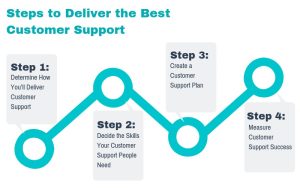Nathan Garries Edmonton is an artistic medium. It calls for a combination of empathy, good communication, and some inventiveness. Your developed relationship can be as important as the final result. Here’s how you ensure you’re always meeting expectations.

Active listening is first of all your friend. Imagine this: the client is sharing their vision while you are in a conference. Rather of merely nodding along, genuinely pay close attention. Probe more deeply with your queries. “What does success look like for you?,” or “Can you describe a time when you were thrilled with a project?” These questions not only help to define their demands but also demonstrate your real concern. You are there to produce something significant, not only to cross off lists.
Let us then discuss clearly defined expectations. Like building a house without a blueprint, anarchy will follow. List what you will present and the date. This does not mean you cannot be adaptable; rather, a road map helps everyone remain in line. If needed, use pictures; everyone enjoys a well-made chart or timeline. It’s like handing them a preview of the future.
Though important, avoid inundating your customers with emails. Keep it neat and pertinent. Though they are not necessary in length, regular updates are absolutely vital. “Just wrapped up the first draft, and I’m excited for your feedback!” says a brief note. It demonstrates that you are on top of things and maintains the momentum.
Not to be overlooked now are feedback loops. Motivational tools help your clients to express their opinions all along. It resembles a dance; you want to be in time. Knowing sooner rather than later is better if they are not feeling a certain direction. This allows you to turn without feeling as though you are beginning from nothing. Allow criticism; it’s a gift, not a weight. Accept it, grow from it, then keep on ahead.
A personal touch may make a world of difference. Recall birthdays or major turning points. A basic “Happy Birthday!” email or a handwritten message can create a relationship outside of the usual client-vendor dynamic. These little acts help to foster cooperation. You are a friend on their path, not only a service provider.
Moreover, knowing the business of the client is essential. Go into their field of work. What difficulties exist for them? Which patterns are determining their direction forward? This information enables you to provide ideas and comments consistent with their objectives. It’s like their covert weapon. Their appreciation of your proactive attitude will help to foster trust.
Clients occasionally may not know exactly what they want. You are there to assist them in sorting it out. Look at options via brainstorming sessions. Like confetti, toss thoughts all about. This is about igniting imagination, not only about solving problems. You could come across something absolutely amazing that neither of you anticipated.
Another key is adaptability. The scene of business is subject to rapid change. Get ready to modify your ideas. Don’t panic if a client approaches you suddenly changing their direction. Rather, welcome it as a chance for invention. Show them that you can turn around without losing view of their objectives.
Finally, honor achievements shared by everybody. Spend some time appreciating the effort of a project that is ending. A little celebration or a virtual high-five will help to strengthen the link you have developed. It is about realizing you two are in this together. This is a trip, not only a purchase.
All things considered, good client cooperation depends on communication, knowledge, and a little imagination. Join them in vision, not only as a supplier. The results of your investments in the relationship will be more gratifying. The aim is to produce something that not only satisfies needs but also surpasses expectations. A pleased client is, after all, a returning client.